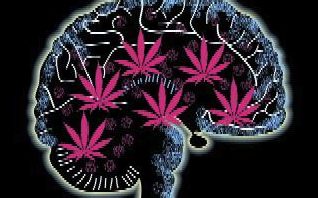In today’s world of scientific technology and intelligence, where the information we gain on a daily basis increases our human knowledge exponentially, the question is often raised, “Where do we draw the line?” From genetic engineering, to stem cell research, to the development of new pharmaceuticals, we consistently wonder if society is flirting with scientific boundaries we should not cross.
A recent and common debate among American citizens is legalizing marijuana for medicinal purposes. Currently, patients who are prescribed medical marijuana in states where its use is legal, are typically suffering from a terminal illness, have been diagnosed with AIDS (or other similar diseases), or are going through treatment for cancer. This is because marijuana has an inherent ability to suppress pain and vomiting while simultaneously stimulating one’s appetite. But, what are marijuana’s effects in the neuropsychiatric story? The answer is not a simple one.
Surprising to many, the body actually produces an endogenous “THC” (the active, psychotropic, ingredient in cannabis). These endocannabinoids, named anandamide and 2-AG, act on two specific receptors in the brain: CB1 and CB2. These are the same receptors that marijuana operates on when it is taken into the body. The interaction between the endocannabinoids and their corresponding receptors is called the eCB system.
Where eCB’s story becomes complicated for researchers is that it has seemingly opposing effects on the brain depending on the location it is acting on and the amount of anadamide or 2-AG that is stimulating the system. Thus, although evidence shows a strong connection between the deregulation of the eCB system and neuropsychiatric disorders, such as depression and anxiety illnesses, researchers have been unsuccessful in developing a technique to target the system for therapeutic effects in patients with these disorders without experiencing numerous side effects.
For example, one area of neuropsychiatric research investigates the effects of endocannabinoids on the eCB system to model its connection to patients with high anxiety or anxiety-related disorders. Researchers found that stimulation of the eCB system in animal models has both anxiolytic as well as anxiogenic effects. This means researchers have found activation of the CB1 and CB2 receptors to suppress anxiousness in some studies while stimulating anxiousness in others. Therefore, as with most pharmaceuticals, the difficulty lies in targeting the drug to a specific area of the body to limit or purge the side effects or experiencing undesired action in the body. Want to make millions? Find a way to focus a drug on its intended destination without affecting any other part of the body.
However, apart from these pharmacological problems is the overall concern society has with prescribing a drug that is used illegally by many for recreational, and not medicinal, purposes. Does extending the terms for which medical marijuana may be prescribed simply increase its availability and likelihood to be abused by users? At what point do we say “No” to pharmaceuticals? Or, is withholding a drug from a patient, primarily because of possible concerns of abuse, morally wrong? After all, Adderall and Codeine are often abused, and yet, we find them in the hands of thousands of patients.
Until the eCB mystery is solved it may be a simpler question to answer. Or maybe the question remains unanswerable for now. But the time will come when scientists resolve the pharmacological questions and target the eCB system for therapeutic purposes and we will have to walk the ambiguous line in determining if and/or how we distribute marijuana for medicinal purposes.
The Ambiguous Line
